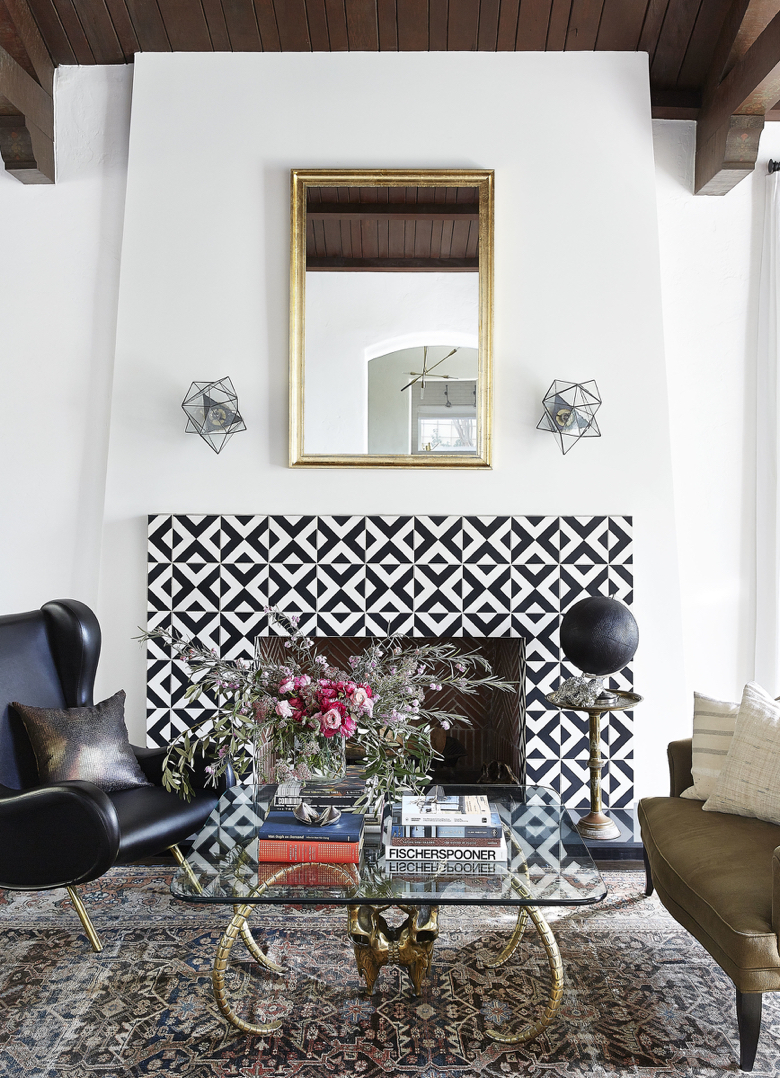DESIGN DICTIONARY: Encaustic Tile
In with the old
Right now encaustic tile is hot, hot hot! Two national magazines have prominently featured it: House Beautiful showcased a bathroom with encaustic tile in its "Essentials" column as the bathroom of the month, and Country Living had this type of tile on its cover used as a backsplash.
But no one is calling encaustic tile by its correct name. These colorful tiles have been re-dubbed with boring nomenclature: the U.S. tile industry is calling them "cement tiles," dropping the long accepted term "encaustic." Perhaps its an effort to suggest that these tiles are a new invention but they have been around FUH-EVER.
Time for a closer look.
What is encaustic tile?
Encaustic tile is a type of tile where the pattern is not a glaze but is produced by layers of different colors of clay (or, in modern day, cement--thus the new name). The pattern is inlaid in the tile so it remains as the tile is worn down.
Each tile is made by hand. A special frame is made from steel and brass, and layers of pigmented cement are poured into the various shapes of the mold. A cement powder is sprinkled over the surface to solidify the pigment, ending with a final coat of cement powder. The tiles are then subjected to hydraulic pressure like a panini press! After that they are removed from the mold, given a water bath and permitted to cure for several weeks.
The tiles are very durable and age beautifully.
They can be used indoors and outdoors. Sealers are recommended. Often 4 tiles are joined to make the pattern. Typically each tile is two colors, but there can be more.
History
Encaustic tile has been around since Medieval times (where they were called simply "inlaid" tiles). They reached great popularity in the Victorian era, especially in England, where they were given the name "encaustic" because the Victorians felt that the tiles resembled an archaic type of enameling with that name.
While this type of tile goes by many labels ( cement tiles, hand poured tiles, concrete tiles, cuban, nicaraguan, hydraulic, moroccan, spanish, belgian, and french tiles, to name a few), encaustic tile has been the most accepted name until this latest resurgence . This colorful tile is right at home most everywhere these days, but in addition to Victorian and Edwardian homes, expect to see it in Spanish and Morrocan influenced residences, among others.
How to refer to this tile today? I suggest that perhaps the most accurate name is "encaustic cement tiles."
Photo credits: First image of kitchen backsplash-flower power kitchen installation, designer: matters of space photographer: Lily King Photography, courtesy Cle Tile. Large kitchen with tile on floor, Lily King photography courtesy of Cle Tile. Tile mold. Entry way with bench from Period LivingConservatory Fireplace surround photograph Daniel Collopy courtesy of Cle Tiles.Arched door. Bathroom Shoefies with encaustic tile courtesy (and from Cle Tile).
IMPORTANT NOTE: Although many of the images in this post are from Cle Tile, this is NOT A SPONSORED POST. I simply adore encaustic tiles and installed them in the vestibule in my old home in Pelham back in 2003--way ahead of the current trend.









